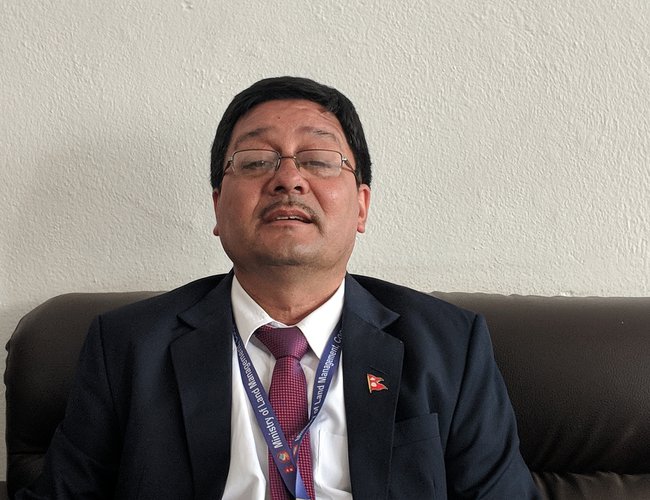
How do you see the state of Haliyas?
The government understands that even after a decade of emancipation of Haliyas, a large number of freed Haliyas are yet to get their rehabilitation packages. Even those who were rehabilitated are facing a crisis to live in dignity and decency. This is the reason the government allocated over Rs.3 billion in budget this year to fulfill its commitments.
What are the modalities for working for Haliyas?
As the government has announced a new package to rehabilitate the freed Haliyas, we will seek the support from local level elected bodies, INGOs like LWF-Nepal, and civil society organizations like Rashtriya Mukta Haliya Samaj Mahasangh to support the government with their expertise and experience. The government will sort out the issues in the rehabilitation of freed Haliyas within the fiscal year. We hope that all the relevant stakeholders will support us in this regard.
How do you work?
We want to work in a collaborative and coordinated manner with civil society organizations like LWF Nepal, which have long experiences of working in the areas of livelihood improvement of freed Haliyas. Those who want to support the government’s policies and programs are welcome to work in their respective specialized fields.
How does the ministry see it?
Haliya rehabilitation is one of the major programs of the ministry. We have been working in the process of rehabilitation of freed Haliya living in 12 districts. There are 19059 families in the original listing. After revising the list, the final list has 16953 families. There is a high level committee under the convenorship of Minister of Land Management, Cooperatives and Poverty Alleviation to rehabilitate freed Haliyas. The government has divided Haliyas in four categories. According to the classification, people with no house and land are under A category. Those who have house but no land are category B and those who have land but no house are under category C. Those who have land and houses are under category D. The Ministry is allocating the money for these categories of people for the rehabilitation.
How do you see the budget for rehabilitation of Haliyas?
To complete all these works, the government has allocated 3.85 billion rupees. This amount will be used to rehabilitate and reconstruct the houses of Haliyas. However, money for another important component, livelihood, is also required.
Have you started any discussion?
We are discussing how to involve INGOs and NGOs. With their long involvement in rehabilitation, the expertise of INGOs will greatly help in implementing livelihood programs. INGOs like Lutheran World Federation Nepal which has been implementing livelihood program directing to Freed Haliyas have also shown interest. With our policies, the government is ready to work with non-state actors and use their expertise and experiences.
What are the challenges of the government?
One of the major challenges before the ministry to implement the program is the lack of technical manpower and experts. We are searching for experts to arrange land and technicians for the construction of the houses. In this sector, the Ministry is ready to work with INGOs and NGOs having experiences of this sector. The Ministry is considering inviting INGOs and NGOs for their involvement and support in this process. Along with the government’s committee, non-state actor, the involvement of local level is also very important in the rehabilitation of Haliyas.
How many stakeholders are there?
There are four stakeholders including center, local level, and non-state actors like INGOs and NGOs and freed Haliya. We have already requested non-state actors to send us proposals, stating where they want to work and how they support freed Haliyas in their livelihood sector, avoiding duplications of the program. We need support from non-state actors in education, health, hygiene, livelihood and micro-credit sectors. We want to complete this work as soon as possible.
Do you think the money offered by the government is enough?
The amount of money is small to purchase the land. We want to complete the rehabilitation work in this fiscal year. However, there is the need to have the livelihood projects for some years to come. If we don’t provide the best livelihood options, there is a risk that they can return to being the Haliyas again. Together with the central government, local level and non-state actors, the settlement of freed Haliays is possible.
- LATE SAMBHU PRASAD GYAWALI: Legendry Lawyer
- May 03, 2024
- TBM’S POPULARITY: Upper Arun And Dudhkohshi Next
- May 02, 2024
- QATAR AMIR’S STATE VISIT: Five Agreements
- Apr 28, 2024
- BIPIN JOSHI: Call For Release
- Apr 21, 2024
- TANAHU HYDROPOWER PROEJCT: A Significant Achievement
- Apr 15, 2024
















